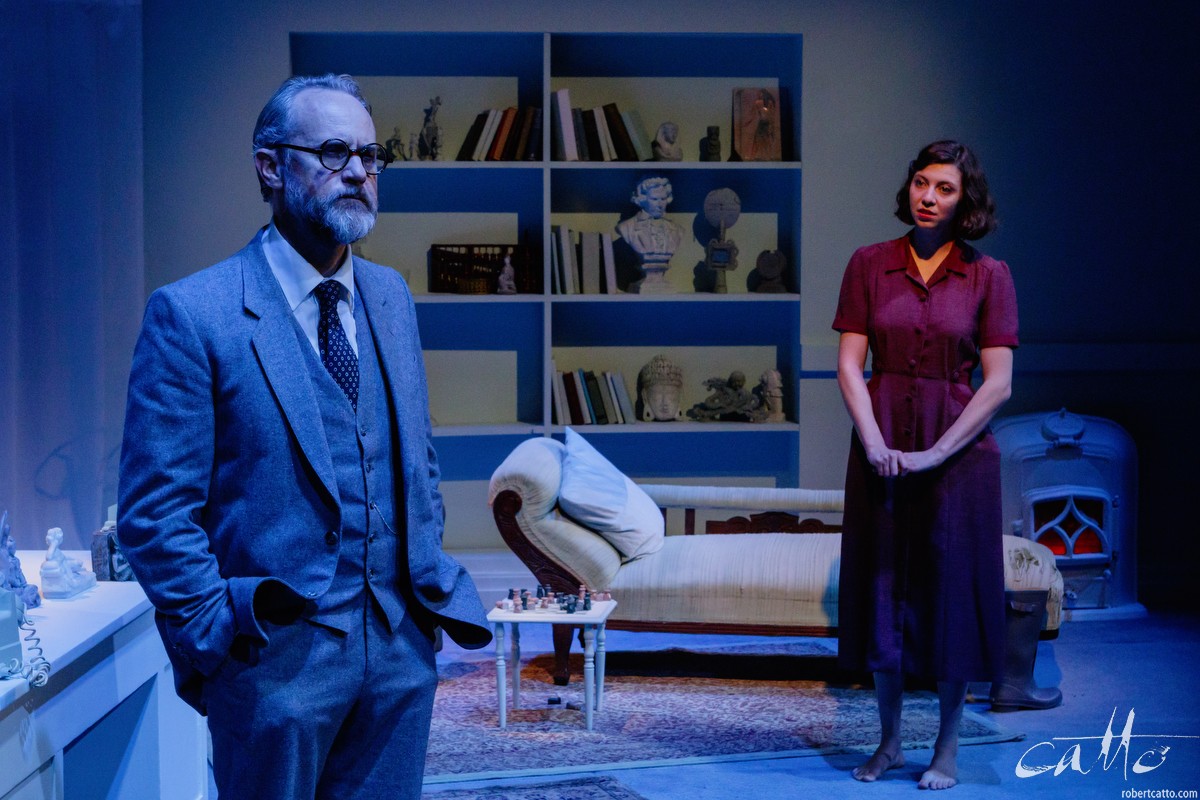Photographing the arts: turning a 3D stage into a 2D image
I was back at Darlinghurst Theatre Company recently for their production of Hysteria, by English playwright Terry Johnson. It's a tough one to sum up quickly, but let's just call it a door-slamming French farce starring Freud & Dali, and leave it at that for the moment!
After my last entry into the Photographing The Arts series of essays, about how to create depth in a production image on stage, I was watching myself work and once again analysing the decisions I make on the fly - how I choose my point of view, both in terms of camera position and lens choice - and it reminded me of something I learned early on as a photographer, in a workshop by Freeman Patterson.
The trick to photography is to translate a three-dimensional space onto a two-dimensional page, on the fly. And make it compelling.
(Oh - is THAT all?)
I talked in the previous essay about using camera position to line up performers in dynamic, interesting ways; and I'm also altering my lens length to create or reduce the space around them (or between them) on stage.
But of course, there are elements of the set around them that I'm also using, to create leading lines through the frame, or just to limit the number of visual distractions in the image with them.
I often say that I use my cameras like a sketch pad, and that I have a 10:1 shooting ratio - which is to say, for every ten I take, there'll be one I think is worth showing to a client.
That's in part because I set high standards for myself and my work; also because I'm often working in low light at the edge of what cameras are capable of, so a number of images might not be good enough from a technical point of view; and because I really am sketching my way towards the ideal framing of a scene, in a situation where I don't have the ability to ask someone to go back & do something again.
So I'll take a photo, change position and take another, change lens length and take another, then the lights will change and I'll take another.
This continues throughout a production, whether we're talking about theatre, music, opera or dance - and every change makes a different dynamic in the image, redistributes power in the image, leads the viewers eye in a different way, or puts the emphasis on a different part of the scene.
Let's have a look at a series of images, taken over the course of a single scene in Hysteria.
(Click the images to scroll through them, and mouse over them for my detailed commentary.)
In the span of one ten minute scene, I've found six completely different ways to photograph it - and of course, there were many more options to choose from, to find these six. (And many more scenes in the show, too!)
Some of these would serve different purposes - a couple would be great for the set designer's portfolio, a couple might suit the lighting designer more, but two or three would make perfectly compelling, interesting marketing or publicity images. And, as we know, it's my job to make everyone happy!
So, that's another small part of the puzzle I'm solving when photographing a production - trying to limit distractions in an image, while creating lines that lead the viewer, and capturing a moment of peak action, that doesn't give away too much of the story.
Just another day at work, really!
Hysteria continues at Darlinghurst Theatre Company until 30 April 2017.
Cast: Miranda Daughtry, Michael McStay, Wendy Strehlow and Jo Turner
Director: Susanna Dowling
Production Designer: Anna Gardiner
Lighting Designer: Daniel Barber
Julian Tynan: Cinematographer
Hair and Makeup Artist: Martelle Hunt
Keep an eye on this page for more updates to my series on photographing the arts, or to catch up on previous instalments - and follow me on Twitter or Facebook to hear about them immediately!















